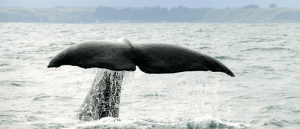Communication is key for dolphins completing cooperative tasks

Human-made noises are disrupting wild dolphins’ ability to communicate and complete cooperative tasks.
Researchers from the University of Bristol (UK) and the Dolphin Research Center (FL, USA) have demonstrated how dolphins in captivity are affected by artificial high-volume noises. By disrupting this natural line of communication in a controlled environment, researchers seek to understand how captive dolphins adapt their communication to overcome these disturbances. This study is important for understanding how human activities, such as drilling and shipping, affect the health of wild dolphins.
Dolphins are famously intelligent and social aquatic mammals that use echolocation and whistles to survive, relying on these abilities to hunt, reproduce and communicate. However, as underwater human-created noise increases and intensifies, dolphins, as well as other aquatic mammals, could potentially struggle to survive when their lines of communication are severed.
First author Pernille Sørensen (University of Bristol) commented, “those same reasons that make sound so advantageous for animals to use also make them susceptible to disturbance from noise in the environment. Within the last couple of decades, we’ve seen a dramatic increase in human-made noise, and noise pollution in the oceans is no exception.”
 Cultural codas: sperm whale dialects differ between clans
Cultural codas: sperm whale dialects differ between clans
After decades of collaborative research, scientists have decoded Pacific Ocean sperm whale vocalizations, revealing how these whales maintain distinct group identities.
In order to understand how dolphins adapt to increased noise volumes, the researchers observed two dolphins in captivity, Delta and Reese, completing a task that required cooperativity and precision via vocal communications. The task called for both dolphins to press their own button, placed on opposite sides of their experimental pool, within 1 second of each other after being released from a starting point. They had suction-cup sound recorders attached to them for recording their vocalizations.
The researchers then adjusted the experimental design to increase the noise volume projected from underwater speakers and staggered the timings the dolphins were released from their starting points.
They found that the dolphins increased the volume and length of their vocalizations and adapted their body language to face one another when the pool noise was increased. The team demonstrated that the dolphins’ success rate dropped from 85% during low pool noise to 62.5% when the pool noise was at its highest.
Both their vocalizations and body positioning were altered to try to overcome the increasing noise disturbance; however, their ability to cooperate was negatively affected even with these adjustments.
“If groups of animals in the wild are, for example, less efficient at foraging cooperatively, then this will negatively impact individual health, which ultimately impacts population health,” suggested co-author Stephanie King (University of Bristol).
The next step would be to observe how noise affects wild dolphins; however, this would be immensely difficult to coordinate. The current study’s authors hope their results are sufficient for highlighting how noise affects wild animals’ ability to complete group tasks.



